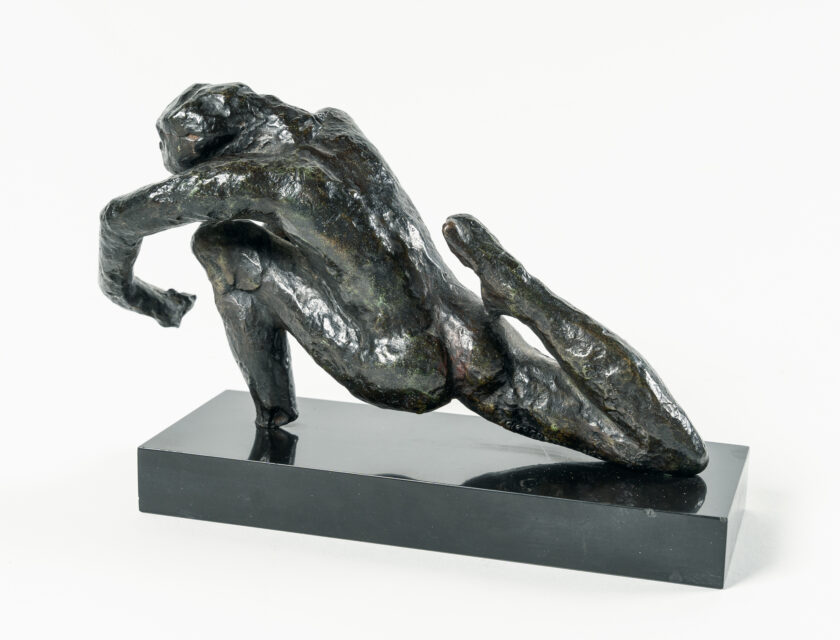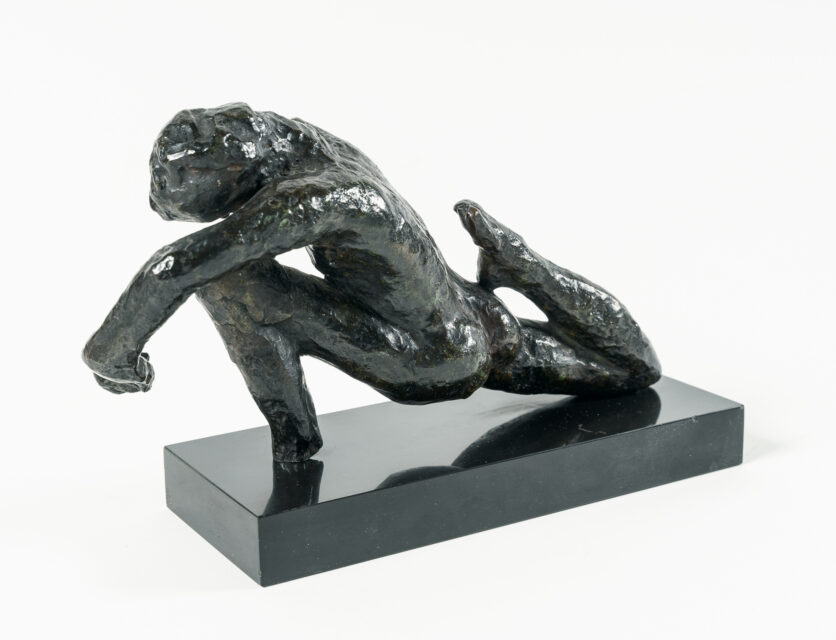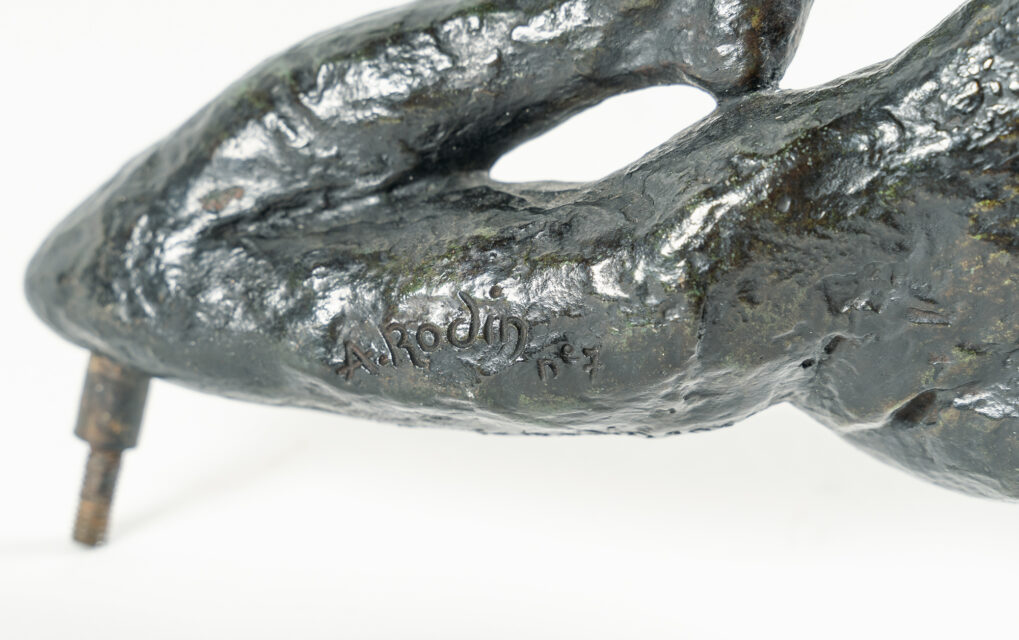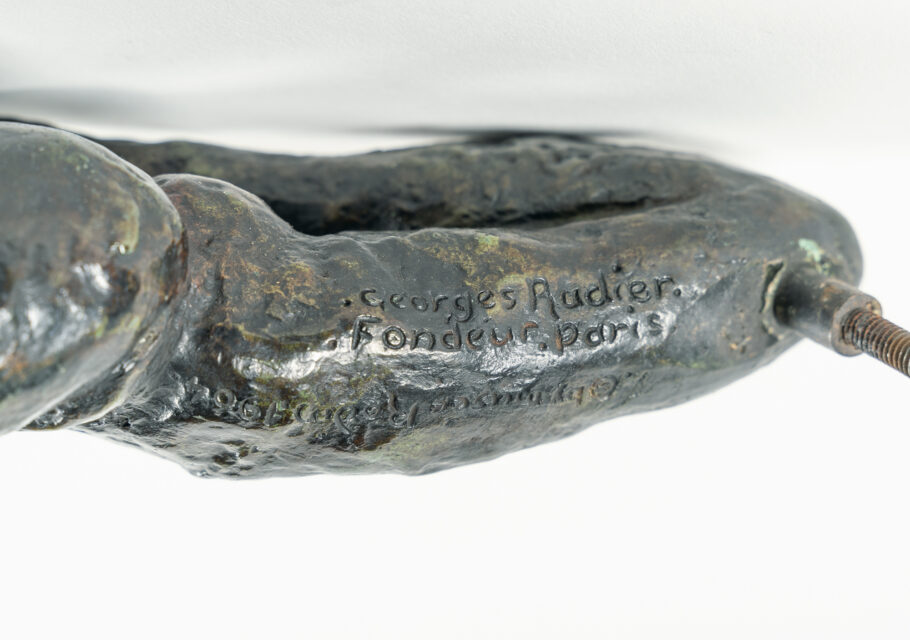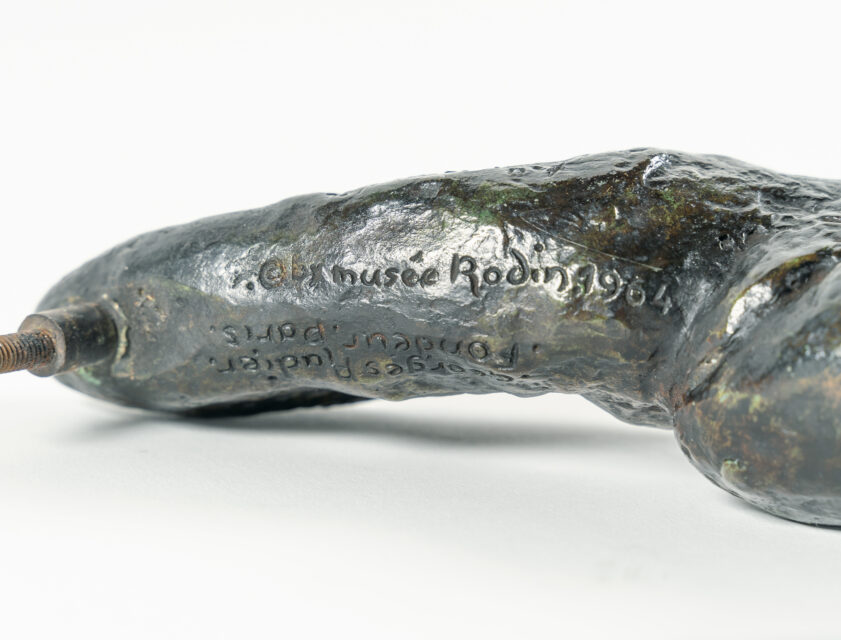Mouvement de danse, étude type I, petit modèle
Details
Le Normand-Romain II, Page 539 (Inv.-Nr. “S. 662”).
Provenance:
Private collection Kurt Delbanco, New York, by inheritance to the present owner;
Private collection, New York.
Description
– Expressive small bronze of Rodin’s mature work
– The sculpture explores the space through the body of the dancing figure and thus represents a less anatomical than an emotional study of movement
– The godmothers of Rodin’s dancers included Isadora Duncan, Loïe Fuller and Alda Moreno
Distorted in motion, the body writhes on the plinth. Distorted and no longer anatomically plausible, the person seems to be twitching in ecstasy. Rodin combines interests here that can be seen again and again throughout his oeuvre: The curiosity to read emotion from the human body and the study of art historical models. His dance bronze offered here is not only anatomically questionable, it is also incomplete. Both the left foot and the right forearm are missing. These missing parts are not fractures, quite the opposite! Rodin repeatedly omits limbs in his work, limiting himself to what is essential for his statements and reducing the form. Just as this dancing figure does not need an identifiable face, not all physical details are necessary either. At the same time, Rodin thus inscribes himself in the art-historical tradition of torsos. Since the Renaissance, artists such as Michelangelo have been interested in imitating the ancient fragments of sculptures, declaring the fragmentary to be the finished workpiece. Rodin, who repeatedly quotes Michelangelo in his work and engages with his works, also creates unfinished bodies in the dancing bronzes that do not require certain details.
Rodin did not find his inspiration for the dancers in classical French ballet, which was dominated by rigour and perfect beauty. Although Alda Moreno, a representative of this tradition, was one of the artist’s models, it was artists such as Loïe Fuller and Isadora Duncan in particular who inspired Rodin – and his artistic contemporaries – with their new perspectives on dance and the limits of the human body. They were less concerned with an academicised dance that dominated the body than with a movement that developed out of the body itself. The artists dance with, rather than against, the body and are committed to new perspectives. Perspectives that inspired Rodin, for example, to create the small bronze offered here, in which the subjective perception and measurement of the body in space play the central role.
* All results incl. buyer’s premium (27%) without VAT. No guarantee, subject to error.
** All post-auction prices excl. buyer's premium and VAT. No guarantee, subject to error.
*** Conditional Sale: The bid was accepted below the limit. Acquisition of the work may still be possible in our post-auction sale.
R = regular taxation
N = differential taxation on works of art which originate from a country outside of the EU
The private or commercial use of images shown on this Website, in particular through duplication or dissemination, is not permitted. All rights reserved.



